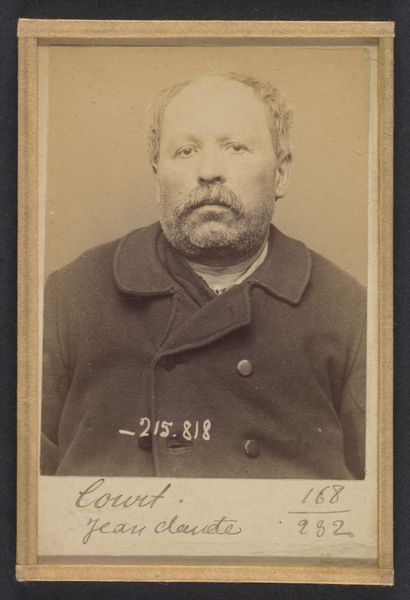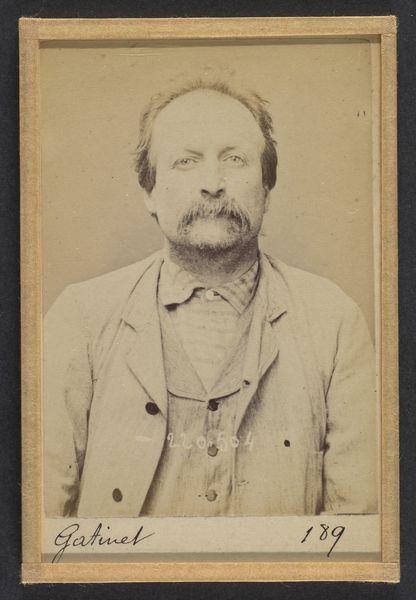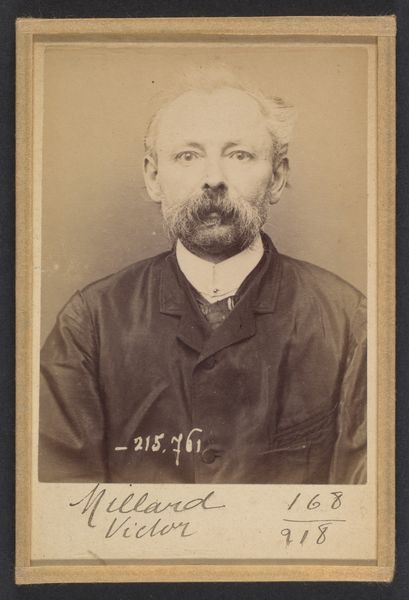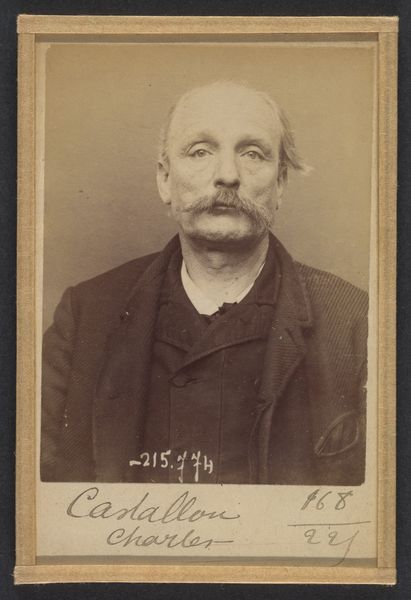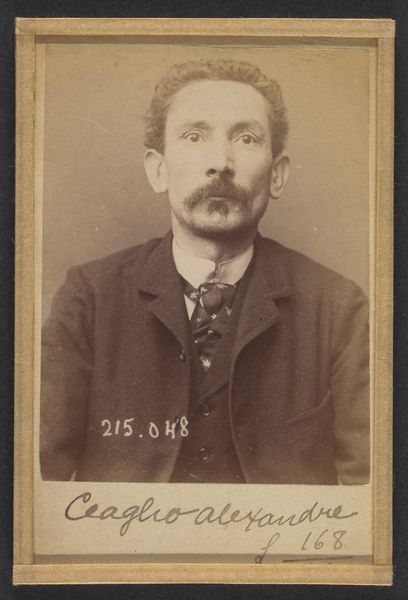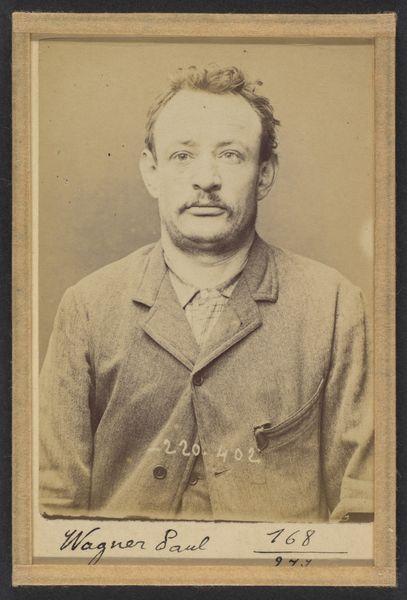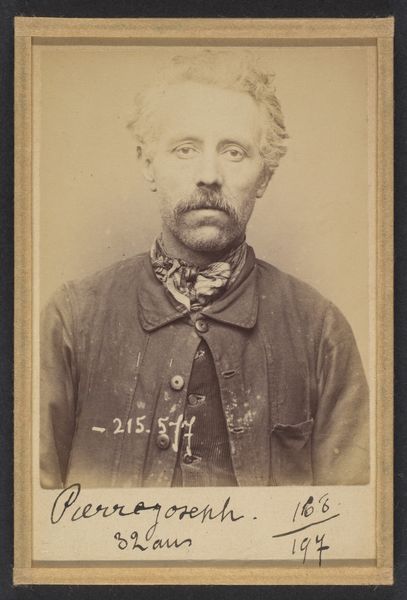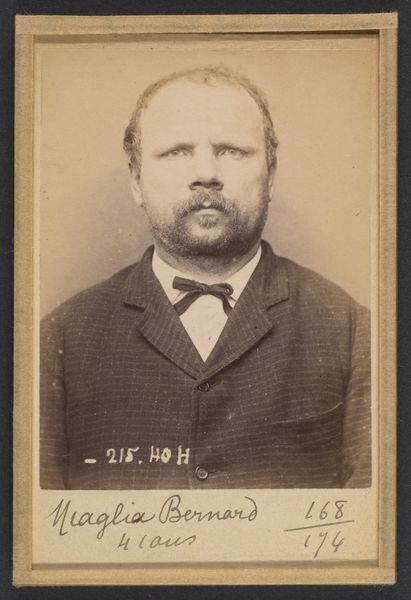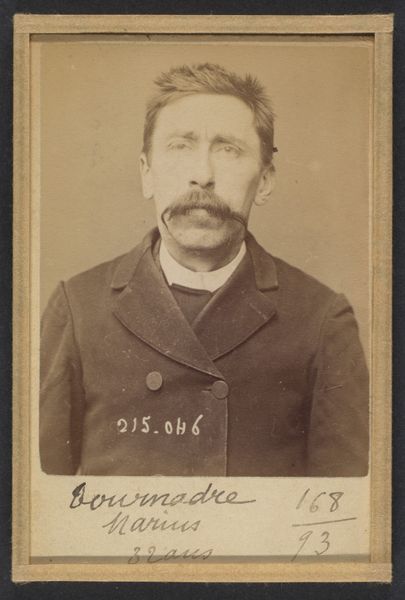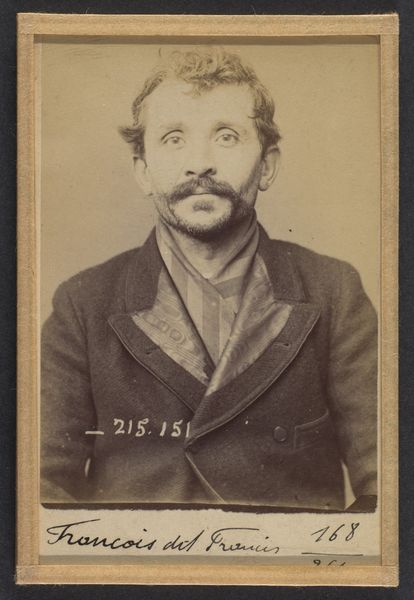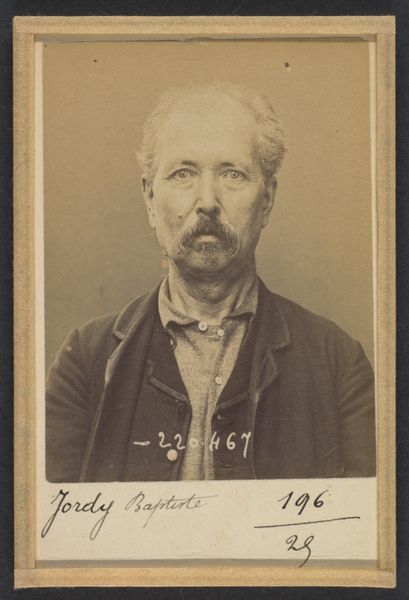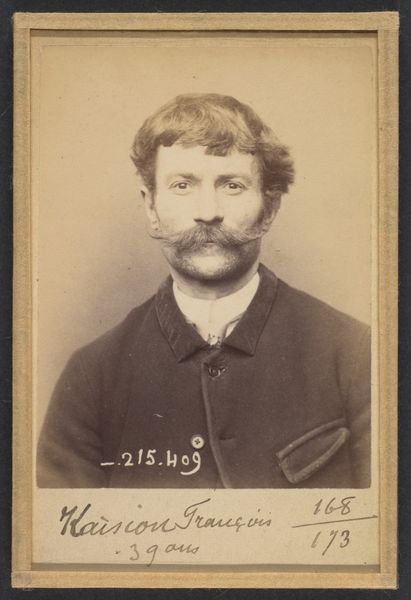
Mazoldi. Frédéric, Jean-Baptiste. 54 ans, né à Bicroz (Autriche). Ferblantier. Anarchiste. 23/3/94. 1894
0:00
0:00
photography, gelatin-silver-print
#
portrait
#
portrait
#
neo-impressionism
#
film poster
#
photography
#
photojournalism
#
gelatin-silver-print
#
history-painting
#
poster
Dimensions: 10.5 x 7 x 0.5 cm (4 1/8 x 2 3/4 x 3/16 in.) each
Copyright: Public Domain
Editor: This is "Mazoldi. Frédéric, Jean-Baptiste," a gelatin silver print taken in 1894 by Alphonse Bertillon. The photograph feels stark, almost clinical. It’s hard to ignore the subject's weary expression, especially when his profession and political leanings, "Anarchiste", are stated right there with his name. What can you tell me about the story behind this work? Curator: Bertillon's photographs weren't created as art, but rather as a tool within a rapidly modernizing and increasingly centralized state. His "portrait parle"—speaking portrait—was an attempt to standardize criminal identification through meticulous measurement and visual recording. Editor: So this is essentially a mugshot from the 19th century? Curator: Exactly, but within the context of anxieties about rising crime rates, urbanization, and anxieties around "the dangerous classes" it's so much more than a simple record. Mazoldi isn't simply an individual; he is presented as a type – the "anarchist" a label freighted with fear and suspicion at that time. The photograph performs a specific social function. It's a document intended to categorize and control. Editor: That makes sense. It's disturbing to think about the power dynamics at play here, labeling and controlling individuals. Curator: It raises questions about how institutions use visual representation to categorize and control populations and how we still use this kind of imagery in contemporary surveillance culture. These mugshots and early examples of forensic photography served as the beginning for new, and in some cases problematic, means of identifying individuals. Editor: It's interesting how a seemingly simple portrait can reveal so much about the history of social control. I'll never look at mugshots the same way. Curator: Indeed. By considering its historical context, we uncover layers of meaning embedded within this single image. Art offers these rich starting points for social critique.
Comments
No comments
Be the first to comment and join the conversation on the ultimate creative platform.
